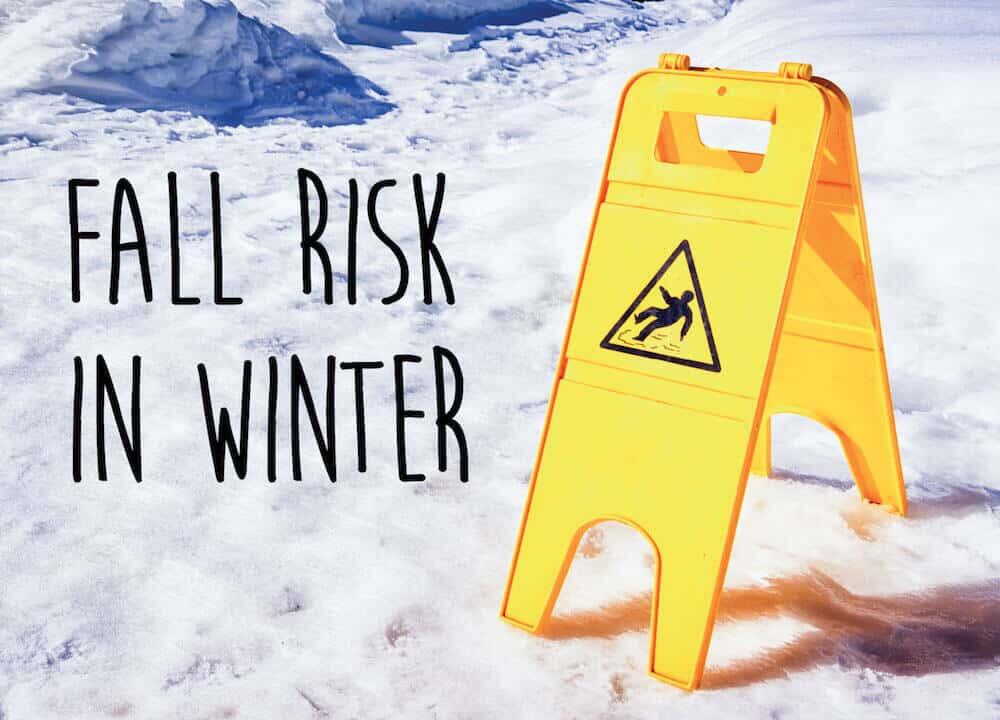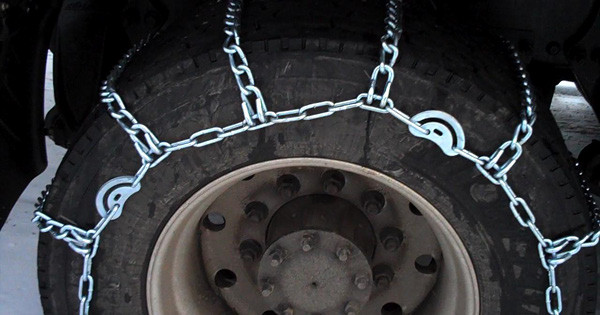Finalize Your Accident Documentation for 2023
This week's Safety Bulletin discusses accident documentation, tunnel vision, and Winter truck maintenance. Read the full safety bulletin here and subscribe to receive future safety bulletins straight to your inbox.
In this issue:
- Winter Driving Safety: "Tunnel Vision"
- Cold Weather Precautions for Drivers
- Truck Maintenance in Winter
- Preventing Driver Injuries in Fall and Winter
- Handling Diesel Exhaust Fluid (DEF) in Cold Months
- Chains for Winter Operations
Motor carriers operating CMVs over 10,000 lbs. MGVWR, transporting hazardous materials (HM) in placardable quantities, or transporting passengers must record accidents on a register by calendar year as defined in 49 CFR 390.51. Even if no accidents occurred, an accident register is required.
Firstly, let's establish the definition of an accident according to the Federal Motor Carrier Safety Regulations: An occurrence involving a commercial motor vehicle (>10,000 lbs. MGVWR, HM, or Passengers) operating on a highway in interstate or intrastate commerce that results in:
- A fatality.
- Bodily injury to a person requiring immediate medical treatment away from the scene.
- One or more motor vehicles incurring disabling damage, requiring towing from the scene.
The term "accident" does not include:
- Boarding and alighting from a stationary motor vehicle.
- Loading or unloading of cargo.
Record accidents on an accident register with the following information:
- Date of accident.
- City or town and State where the accident occurred.
- Driver Name.
- Number of injuries.
- Number of fatalities.
- Whether hazardous materials, other than fuel from the vehicle's tanks, were released.
Motor carriers must maintain the accident register for three years and keep copies of required accident reports from the State or other entities or insurers. The register is not sent to the FMCSA or State but is held for review during compliance reviews or investigations.
As a best practice, motor carriers should maintain two accident registers by calendar year:
- DOT recordable accidents only.
- Non-DOT recordable accidents.
This practice helps provide the FMCSA with requested information during a compliance review. A second register with all accidents allows for proactive analysis and training to reduce frequency. Accident registers can be kept electronically, with a hard copy available for the FMCSA upon request.
To ensure accuracy with the FMCSA, view recordable accidents on the FMCSA Compliance, Safety, and Accountability (CSA) Safety Measurement System (SMS) at FMCSA SMS.
For accidents involving the release of hazardous materials, carriers must complete a dangerous incident report (see 49 CFR 171.15 and 49 CFR 171.16). Keep accident registers in either paper or electronic format.
Winter Driving Safety: "Tunnel Vision"
As winter sets in, ensuring safe driving practices and clear visibility is crucial. "Tunnel vision," a risky behavior during winter, occurs when drivers only scrape a small area of ice or snow from their windshield, leaving a small hole for visibility. Tunnel vision significantly reduces their field of vision and increases the risk of collisions.
The Kansas Highway Patrol estimates that drivers practicing tunnel vision limit their vision to only 2 to 3 percent of what a driver with a fully cleared windshield can see. A survey by the Center for Safe Driving found that over 50 percent of drivers admit to not thoroughly clearing snow or ice from their vehicle windows.
Many states have enacted laws requiring drivers to remove snow or ice from their vehicles. Law enforcement nationwide focuses on drivers who neglect to clear their windshields this winter.
As part of your pre-trip inspection, ensure that the windshield, side windows, and mirrors are completely clear of snow, ice, or fog before starting your route. Neglecting this can lead to reduced visibility and increased danger on the road.
Another hazard arises from chunks of snow or ice flying off the top of vehicles, posing dangers to those behind. These projectiles can be heavy and cause crashes, injuries, or even fatalities. If heavy snow is forecasted, consider pulling your unit away from the dock or terminal to prevent snow buildup from the building's roof on your trailer or truck.
Professional drivers should be vigilant about recognizing unsafe practices in other drivers and be prepared to avoid collisions by staying out of their way. Taking these precautions ensures safer winter driving for everyone on the road.
Winter Safety Tips for Drivers and Vehicles
Protecting Your Driver:
Cold weather poses risks of hypothermia and frostbite. To prevent hypothermia, take these precautions:
- Wear layers of warm, loose-fitting clothes, especially those that wick moisture.
- Use gloves and knit caps for heat retention.
- Change wet clothing promptly.
- Keep an emergency kit with a change of clothes, a blanket, hand warmers, and snacks.
- Consume hot, nutritious meals and stay hydrated.
- Avoid alcoholic beverages.
- Ensure communication for drivers in case of breakdowns in rural areas.
Prescription drugs may increase sensitivity to cold; consult with a healthcare professional.
Frostbite prevention:
- Shield skin from cold air and extreme temperatures.
- Recognize frostbite symptoms like skin color changes, numbness, and stiffness.
Protecting the Truck:
- Add diesel supplement to ultra-low sulfur diesel below 32°F.
- Plug in the engine block heater below 32°F; start unused trucks daily.
- Follow a startup procedure for optimal engine performance.
- Purge air tanks daily for trucks with air brakes.
- Apply brakes lightly in wintry conditions before parking to prevent freezing.
- Maintaining total windshield washer solvent and cleaning windows.
- Remove ice-snow buildup from steps and grab handles.
- Use the 3-point method for entering/exiting the cab.
- Avoid parking in areas prone to snow accumulation, preventing roof collapse.

Preventing Driver Injuries in Fall and Winter:
Slip, trip, and fall injuries are common in winter. Stay safe with these tips:
- Wear proper footwear with non-slip soles.
- Slow down and pay attention to surroundings.
- Watch for ice accumulation, take small steps, and check footing.
- Inspect handrails and hand grabs for ice before use.
- Always use gloves and three points of contact.
- Wear a seatbelt.
- Slow down and exercise caution in winter conditions.
Handling Diesel Exhaust Fluid (DEF) in Cold Months:
The winter season brings unique challenges for equipment using diesel exhaust fluid (DEF). Comprising a blend of technically pure urea and purified water, DEF freezes at 11 degrees Fahrenheit and -11 degrees Celsius. Proper maintenance and dispensing are essential to uphold its quality, according to the American Petroleum Institute. Similar to water, DEF expands by up to 7% when frozen, posing a risk of damage to the storage tank if it is at or near full capacity during freezing conditions. It is advisable to keep the DEF tank less than full in cold temperatures to mitigate potential issues.

Chains for Winter Operations:
If you are driving in a state that mandates carrying chains, ensure they are of the right size, securely fastened, clean, and free from damage for easy application when needed. If you're uncertain about your state's chain laws, visit:
*The Idealease Safety Bulletin is provided for Idealease locations and their customers and is not to be construed as a complete or exhaustive source of compliance or safety information. The Idealease Safety Bulletin is advisory in nature and does not warrant, guarantee, or otherwise certify compliance with laws, regulations, requirements, or guidelines of any local, state, or Federal agency and/or governing body, or industry standard.
